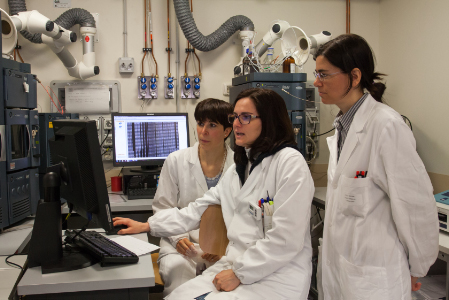- Autori:
-
Mastrorilli, Carla; Arasi, Stefania; Barni, Simona; Caimmi, Davide; Chiera, Fernanda; Comberiati, Pasquale; Dinardo, Giulio; Giannetti, Arianna; Gismondi, Marco; Gracci, Serena; Paravati, Francesco; Pelosi, Umberto; MIRAGLIA DEL GIUDICE, Michele; Bernardini, Roberto; Pecoraro, Luca
- Titolo:
-
IgE-Mediated and Non-IgE-Mediated Fish Allergy in Pediatric Age: A Holistic Approach—A Consensus by Diagnostic Commission of the Italian Society of Pediatric Allergy and Immunology
- Anno:
-
2023
- Tipologia prodotto:
-
Articolo in Rivista
- Tipologia ANVUR:
- Articolo su rivista
- Lingua:
-
Inglese
- Referee:
-
No
- Nome rivista:
- MEDICINA
- ISSN Rivista:
- 1648-9144
- N° Volume:
-
59
- Numero o Fascicolo:
-
9
- Intervallo pagine:
-
1651-1669
- Parole chiave:
-
N/A
- Breve descrizione dei contenuti:
- Fish is one of the “big nine” foods triggering allergic reactions. For this reason, fish allergens must be accurately specified on food labels. Fish allergy affects less than 1% of the world population, but a higher prevalence is observed in pediatric cohorts, up to 7%. Parvalbumin is the main fish allergen found in the muscles. In childhood, sensitization to fish allergens occurs most frequently through the ingestion of fish, rarely transcutaneously or by inhalation. Fish allergy symptoms usually appear within two hours of the allergen contact. The diagnosis beginswith the collection of the history. If it is suggestive of fish allergy, prick tests or the measurement of serum-specific IgE should be performed to confirm the suspicion. The oral food challenge is the gold standard for the diagnosis. It is not recommended in case of a severe allergic reaction. It is important tomake a differential diagnosis with anisakiasis or scombroid poisoning, which have overlapping clinical features but differ in pathogenesis. Traditionally, managing fish allergy involves avoiding the triggering species (sometimes all bony fish species) and requires an action plan for accidental exposures. The present review will analyze IgE- and non-IgE-mediated fish allergy in children from epidemiology, pathogenesis to clinical features. Moreover, clinical management will be addressed with a particular focus on potential nutritional deficiencies
- Id prodotto:
-
135429
- Handle IRIS:
-
11562/1107026
- ultima modifica:
-
30 ottobre 2024
- Citazione bibliografica:
-
Mastrorilli, Carla; Arasi, Stefania; Barni, Simona; Caimmi, Davide; Chiera, Fernanda; Comberiati, Pasquale; Dinardo, Giulio; Giannetti, Arianna; Gismondi, Marco; Gracci, Serena; Paravati, Francesco; Pelosi, Umberto; MIRAGLIA DEL GIUDICE, Michele; Bernardini, Roberto; Pecoraro, Luca,
IgE-Mediated and Non-IgE-Mediated Fish Allergy in Pediatric Age: A Holistic Approach—A Consensus by Diagnostic Commission of the Italian Society of Pediatric Allergy and Immunology
«MEDICINA»
, vol.
59
, n.
9
,
2023
,
pp. 1651-1669
Consulta la scheda completa presente nel
repository istituzionale della Ricerca di Ateneo 








